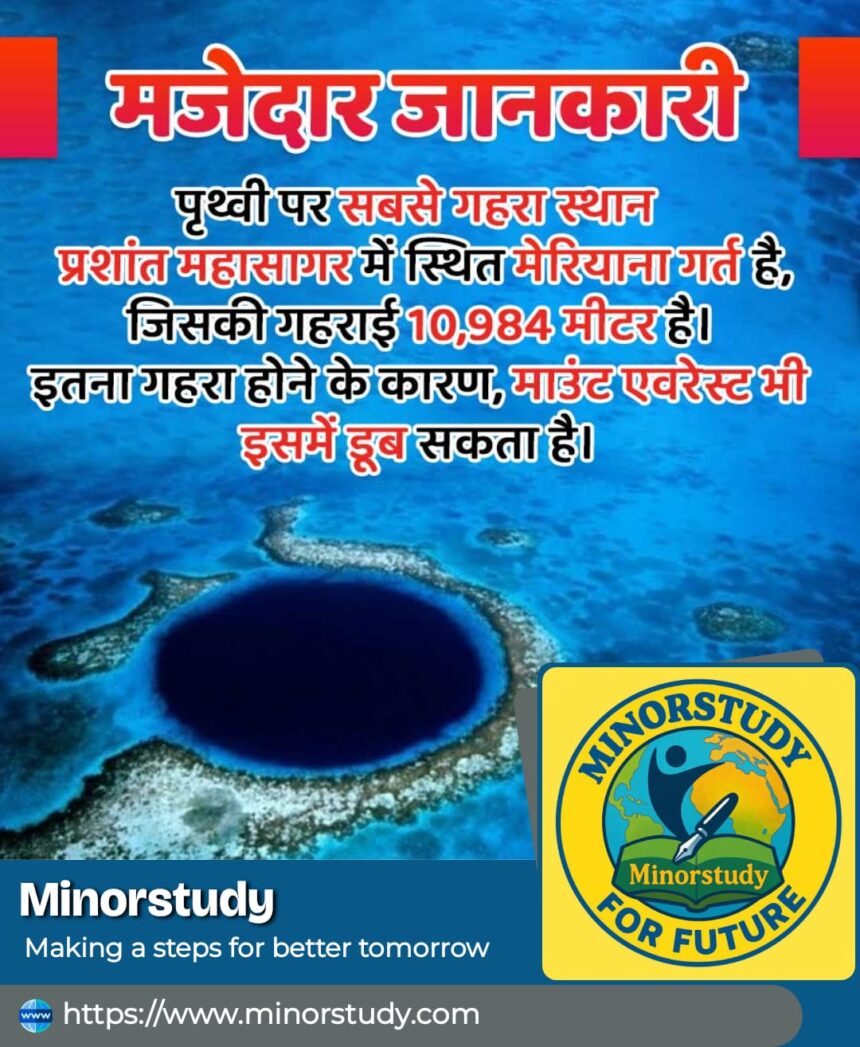🌊 9 Surprising Truths About the Mariana Trench That Will Leave You Speechless
Welcome to the deepest part of our planet — a place darker than night, colder than ice, and more mysterious than space for many. The Mariana Trench, hidden deep beneath the Pacific Ocean, is one of Earth’s most astonishing natural wonders. It is so deep that Mount Everest would disappear inside it, and yet, it’s teeming with secrets we’ve barely begun to uncover.
- 📍 Basic Introduction: What Is the Mariana Trench?
- 🧭 Timeline of the Mariana Trench Discovery
- 🌊 9 Astonishing Facts About the Mariana Trench
- 1. It’s Deeper Than Mount Everest Is Tall
- 2. Pressure at the Bottom Is Crushing
- 3. It’s Named After a Ship, Not a Person
- 4. It Hosts Alien-Like Creatures
- 5. Only a Handful Have Ever Been There
- 6. It May Hold Secrets to Climate Change
- 7. There Are Underwater Volcanoes Nearby
- 8. Sound Travels Differently Here
- 9. Pollution Has Reached It
- 🧠 Scientific and Environmental Significance
- ❓FAQs About the Mariana Trench
- Q1. Where is the Mariana Trench located?
- Q2. How deep is the Mariana Trench?
- Q3. Is there life at the bottom?
- Q4. Can humans go there?
- Q5. Is it the deepest place in all oceans?
- 📚 Importance in Our Life and Society
- 🎉 Wishing Message to Share
- ✅ Important Points to Remember
- 🧘♂️ Conclusion: The Deepest Mystery of Planet Earth
- 🔗 Related Our Articles
In this human-friendly, fascinating, and enlightening article, we explore everything about the Mariana Trench — from history, facts, FAQs, timeline, and scientific significance, to its impact on life and society. So buckle up, because we’re diving into the Earth’s ultimate abyss — and trust us, you’ve never read about it like this before.
📍 Basic Introduction: What Is the Mariana Trench?
The Mariana Trench is a crescent-shaped trench in the western Pacific Ocean, just east of the Mariana Islands near Guam. It’s recognized as the deepest oceanic trench on Earth, plunging to an incredible depth of 10,984 meters (36,037 feet) at its deepest point, known as the Challenger Deep.
🧭 Timeline of the Mariana Trench Discovery
| Year | Milestone |
|---|---|
| 1875 | HMS Challenger made the first soundings of the trench, marking its depth at ~8,184 meters. |
| 1951 | British ship Challenger II discovered the Challenger Deep. |
| 1960 | Don Walsh and Jacques Piccard reached the bottom in Trieste submersible. |
| 2009 | US research ship Kilo Moana mapped the trench in detail. |
| 2012 | Filmmaker James Cameron became the first solo diver to reach Challenger Deep. |
| 2020s | Ongoing expeditions use unmanned vehicles to explore unique lifeforms. |
🌊 9 Astonishing Facts About the Mariana Trench
1. It’s Deeper Than Mount Everest Is Tall
Mount Everest stands at 8,848 meters, but the Challenger Deep is 10,984 meters deep — that’s 2 km more than Everest’s height! If Everest were dropped into the trench, it would be completely submerged with space to spare.
2. Pressure at the Bottom Is Crushing
At the deepest point, the pressure is over 1,000 times greater than at sea level — around 8 tons per square inch. It would crush most submarines and all human bones without special protection.
3. It’s Named After a Ship, Not a Person
The name “Mariana Trench” comes from the nearby Mariana Islands, which were named after Queen Mariana of Austria. The Challenger Deep is named after the HMS Challenger.
4. It Hosts Alien-Like Creatures
From amphipods that glow in the dark to gigantic single-celled organisms, the trench is home to extremophiles — organisms that live in extreme conditions and possibly resemble life on other planets.
5. Only a Handful Have Ever Been There
Fewer people have been to the bottom of the Mariana Trench than to the Moon. As of now, only a few manned expeditions have successfully reached Challenger Deep.
6. It May Hold Secrets to Climate Change
Sediments in the trench may trap carbon and greenhouse gases, acting as natural carbon sinks. Studying them could help us understand and fight global warming.
7. There Are Underwater Volcanoes Nearby
Hydrothermal vents and seamounts (underwater volcanoes) exist near the trench, contributing to unique chemical environments and energy sources.
8. Sound Travels Differently Here
Because of extreme pressure, sound travels faster and farther at the bottom of the trench, making it a mysterious realm where communication behaves differently.
9. Pollution Has Reached It
Despite being one of the most remote places on Earth, scientists have found plastic bags, microplastics, and toxic chemicals at the trench’s bottom — proving how deeply human impact extends.
🧠 Scientific and Environmental Significance
The Mariana Trench isn’t just an exotic location; it holds critical significance for our planet:
🌎 Earth’s Inner Structure
Studying it helps scientists understand plate tectonics, earthquakes, and volcanic activity.
🧬 Biological Evolution
The trench houses lifeforms not found anywhere else, possibly offering insights into early life on Earth — and maybe even how life might survive in oceans on other planets or moons like Europa or Enceladus.
🌱 Climate Impact
By examining carbon capture and sedimentation processes, researchers might discover natural solutions to climate challenges.
❓FAQs About the Mariana Trench
Q1. Where is the Mariana Trench located?
It is located in the western Pacific Ocean, east of the Mariana Islands near Guam.
Q2. How deep is the Mariana Trench?
Its deepest part, Challenger Deep, is around 10,984 meters (36,037 feet) deep.
Q3. Is there life at the bottom?
Yes! Microorganisms, crustaceans, and other deep-sea creatures thrive in extreme pressure and dark environments.
Q4. Can humans go there?
Yes, but only with specially-designed submersibles. Few expeditions have ever successfully reached the bottom.
Q5. Is it the deepest place in all oceans?
Yes, it’s the deepest known point in any ocean on Earth.
📚 Importance in Our Life and Society
You might wonder: “How does something so remote and deep affect my everyday life?”
Surprisingly, the Mariana Trench influences us more than we realize.
🔬 In Science and Education
Encourages oceanography, marine biology, and astrobiology.
Inspires students to explore STEM careers and ocean conservation.
🌍 In Environment and Conservation
Highlights how pollution reaches even the remotest corners, urging stronger environmental policies.
Acts as a climate lab for researchers studying global warming.
💡 In Innovation
Technologies used for deep-sea exploration influence fields like robotics, AI, engineering, and materials science.
🎨 In Art and Pop Culture
Featured in films like The Abyss, Finding Nemo, and documentaries by National Geographic, inspiring curiosity and wonder.
🎉 Wishing Message to Share
🌊 “May your curiosity dive as deep as the Mariana Trench and your wisdom rise as high as the mountains! Stay inspired, stay inquisitive.”
🐚 “Like the depths of the Mariana Trench, may your inner strength be unseen but powerful. Keep exploring life’s mysteries!”
✅ Important Points to Remember
The Mariana Trench is the deepest natural point on Earth.
It’s home to rare life, alien-like organisms, and extreme environments.
It plays a key role in climate science, marine biology, and planetary research.
Only a few people have reached its bottom — it’s one of Earth’s last frontiers.
🧘♂️ Conclusion: The Deepest Mystery of Planet Earth
The Mariana Trench is a symbol of nature’s majesty and mystery. It challenges us, humbles us, and opens a window into realms we’ve barely explored. While we live on the Earth’s surface, the secrets of life, evolution, and the planet’s history may lie far beneath, in the depths of the trench.
It’s a reminder that no matter how advanced we become, there’s always more to discover, respect, and protect in nature.
So the next time you look at the ocean, remember — beneath those calm waves lies a world deeper, darker, and more powerful than you ever imagined.
🔗 Related Our Articles
Mariana Trench depth
Fun facts about the Mariana Trench
Challenger Deep truth
How deep is the Mariana Trench
Mariana Trench pollution and exploration
James Cameron Mariana Trench dive
Deepest places on Earth








